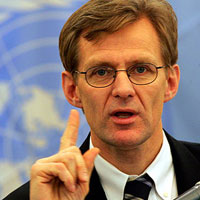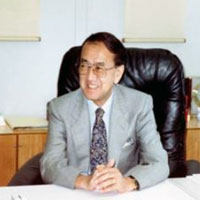|
|||||||||||||||||||
OUR JOURNAL
|
|||||||||||||||||||
| more | |
SCIENTIFIC WORKS

![]()
In this section we represent the proceedings and books consecrate of radiation accidents and catastrophes.
| more | |
https://1zapteka.ru Ðåäóñëèì òàáëåòêè öåíà â àïòåêå.
STATEMENTS

 Mr.
Jan Egeland, the UN’s Under-Secretary-General for Humanitarian Affairs
Mr.
Jan Egeland, the UN’s Under-Secretary-General for Humanitarian Affairs
"The international community must renew its efforts to help the people of the affected regions take control of their lives again. The aftermath of the Chernobyl accident is simply too much for people in the contaminated areas of Belarus, the Russian Federation and Ukraine to cope with alone. We simply cannot turn our backs. We can and must do more to help bring development and hope to the affected people”… Eighteen years ago today, nearly 8.4 million people in Belarus, Ukraine and Russia were exposed to radiation. Some 150,000 kilometres, an area half the size of Italy, were contaminated. Agricultural areas covering nearly 52,000 sq. km, which is more than the size of Denmark, were ruined. Nearly 400,000 people were resettled but millions continued to live in an environment where continued residual exposure created a range of adverse effects. Now, roughly 6 million people live in affected areas. Economies in the region have stagnated with the three countries directly affected spending billions of dollars to cope with the lingering effects of the Chernobyl disaster. Chronic health problems, especially among children, are rampant. In some areas of Belarus, for example, national reports indicate that incidents of thyroid cancer in children have increased more than one hundred-fold when compared with the period before the accident…"
 Hiroshi
Nakadjima. MD, PhD. Director General Emeritus of WHO (Japan)
Hiroshi
Nakadjima. MD, PhD. Director General Emeritus of WHO (Japan)
Development of new technologies such as molecular biological
dosimetry and statistical and stochastic methods such as meta analysis
and algorithm.
Dose effect relation assessment for mortality and morbidity of long term
low dose irradiated population. Linear Non Threshold dose- effect or application
of radiation hormesis (like tobacco and wine!)
Monitoring of plant workers, liquidators and surrounding population, even
low dose exposure, as precautionary measure. 20 years is too short for
assessment and evaluation of future morbidity and mortality
Evacuation in open air after accident to be avoided. Need regular weather
monitoring
Water pollution/contamination monitoring
Continuous education, information and involvement of population
Increased transparency of nuclear operators and responsible state nuclear
safety organization, avoidance of inappropriate Iodine distribution
Special education for health profession particularly local medical practitioners,
pharmacists and veterinarians for radiation related diseases and to exercise
regular check-up of population as a precaution measure
Continuous registration and updating of exposed population
Follow-up possible radiation related diseases such as thyroid cancer and
non-cancer thyroid diseases, leukemia, bone diseases, CVD, cataract, mental
health and psychosocial effects and associated factors such as lifestyle,
environment, socioeconomic conditions
Special attention to possible increase of breast cancer as delayed consequence
of irradiation and/or delayed side effect of thyroid cancer treatment
(especially TSH suppressor therapy) and non cancer thyroid diseases (such
as Hashimoto disease) and dysfunction.
Life style education to exposed population re nutrition, smoking, alcohol
and physical exercise and building appropriate sports and exercise facilities
in low dose contaminated area where return of population is possible.
Professor Gennady Souñhkevtch. International Relief Fund for Children affected by War & Disasters. (Russian Federation).
"The Chernobyl experience helped us in a certain
way – it helped us … to make the right results and decisions.
These cases are not mentioned with children because in 2004, for instance,
they had a common plan of action that …… the (IAEA), WHO, UNICEF organizations,
but they make no mention of specialized approach to use on the children.,
…I believe that sometimes we spend too much emotion, and spend too much
time so as to prove which factor is the topical in radiological accidents,
the kind of; is it stress, the induction, or chemical inductions that
are very important, it’s complex. These accidents are very complex; they
have all of these factors and many more. I believe that in such cases
the scientists and public should dwell only on one factor. In the situation
we should dwell on argumentation only as additional to our picture, what
was the reason of such tragic consequences of Chernobyl? We have to know
what is the reason of this or that biological effect because if we know
the reason we then 90-80% ….doctor is prepared and he knows how to cure
this pathology, but we should approach also in such a way that the complex
accidents have also specific components of crushing effects, as well as
unspecific factors. That’s why we can talk about the radiological factor
as also a complex crushing factor as well, so as ….to prevent such arguments
between the public and scientists who dwell only on one or several factors.
I believe that in such situations the complex approach will be the most
right one…"






